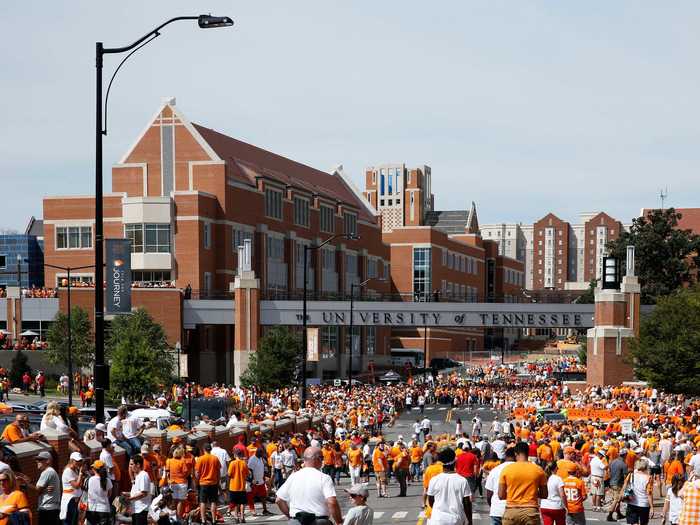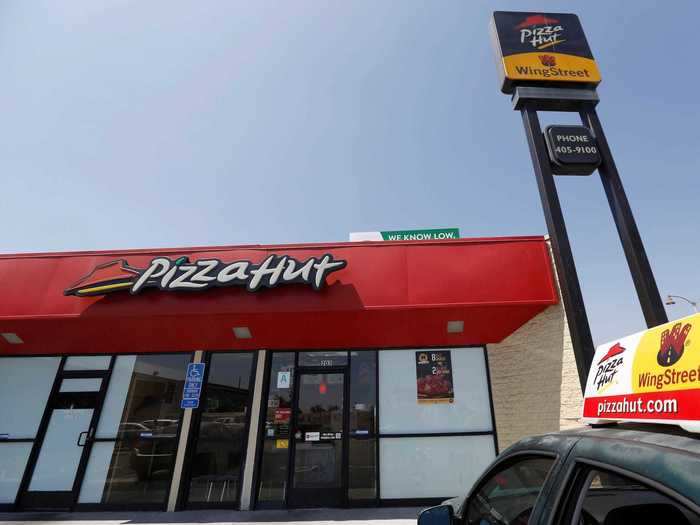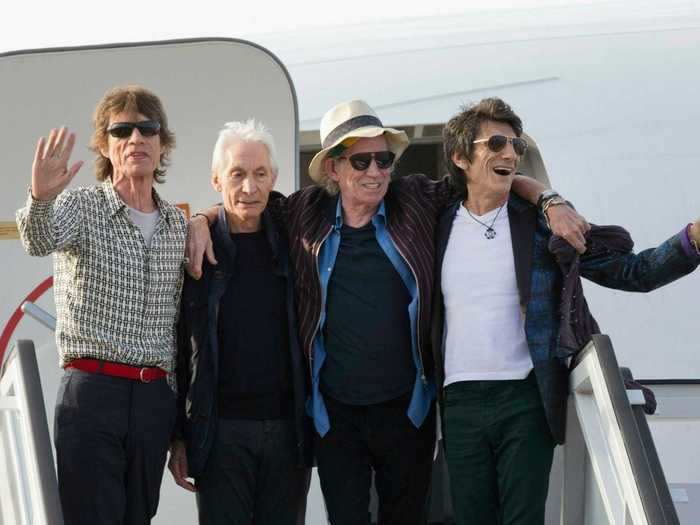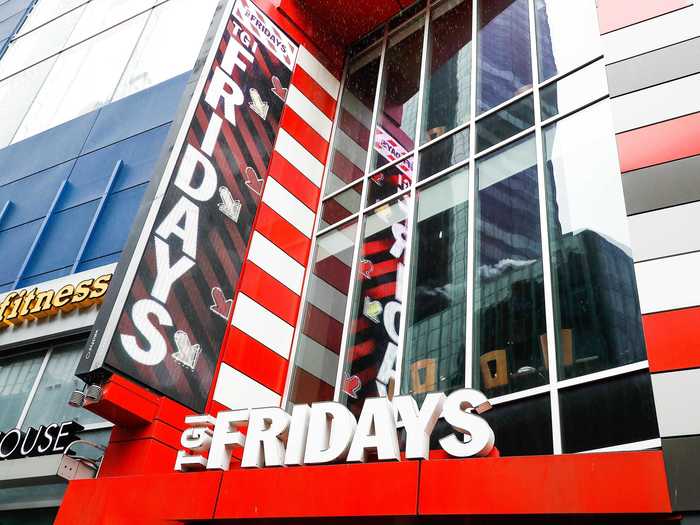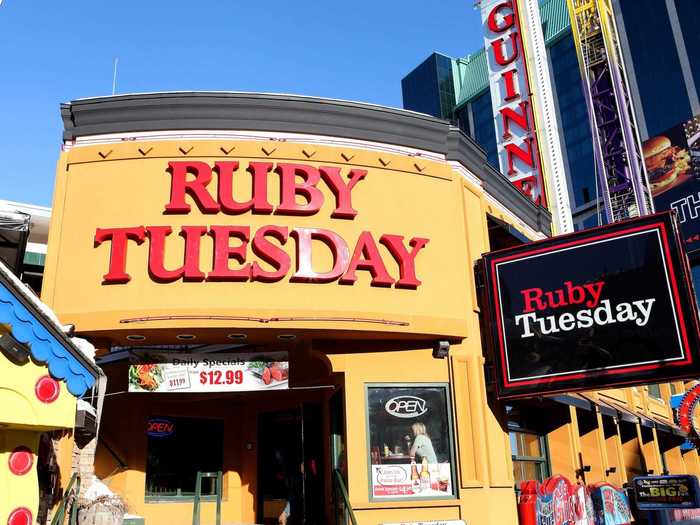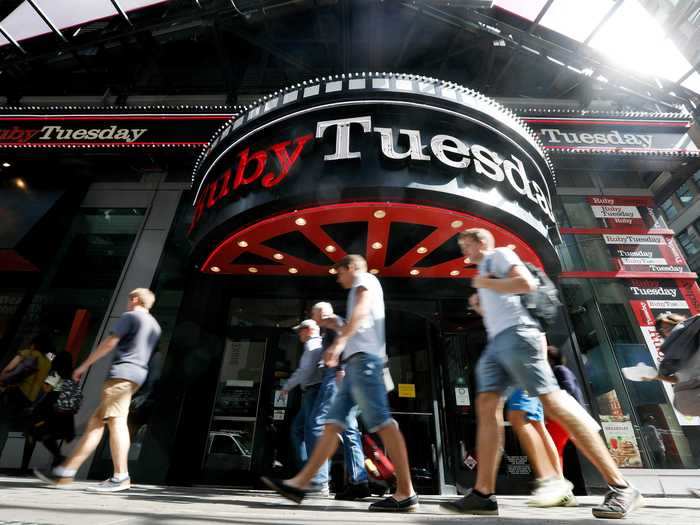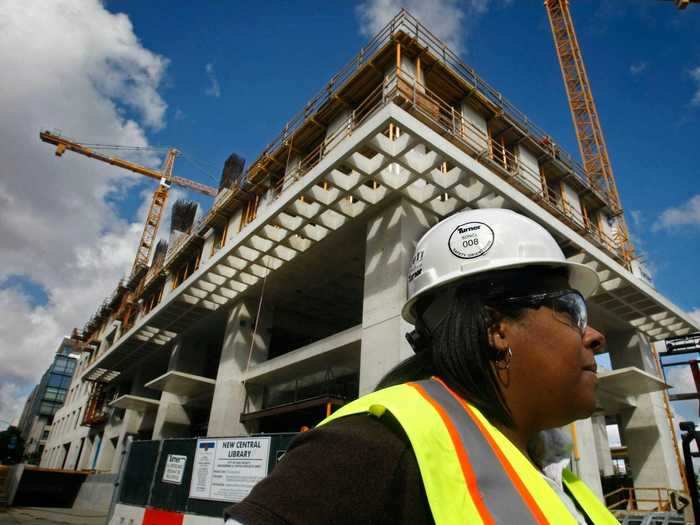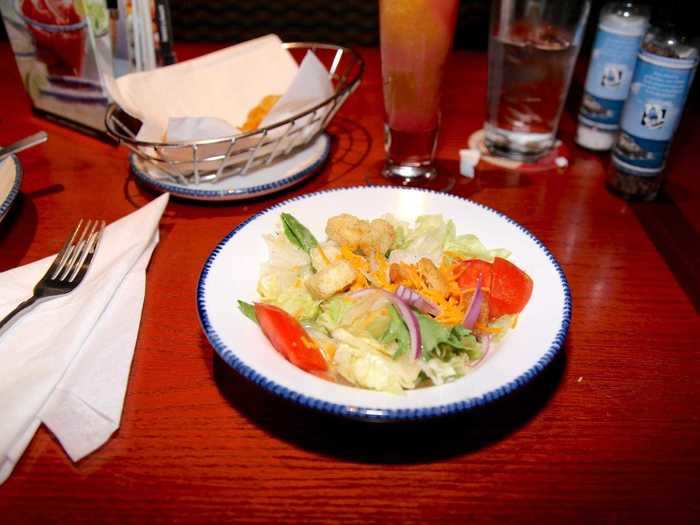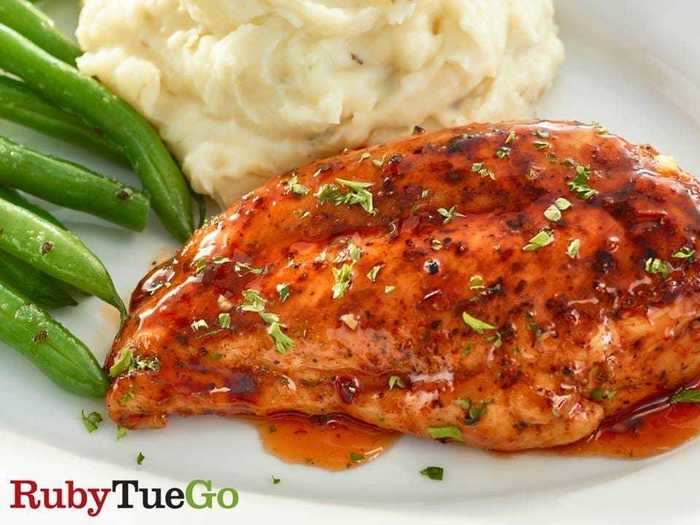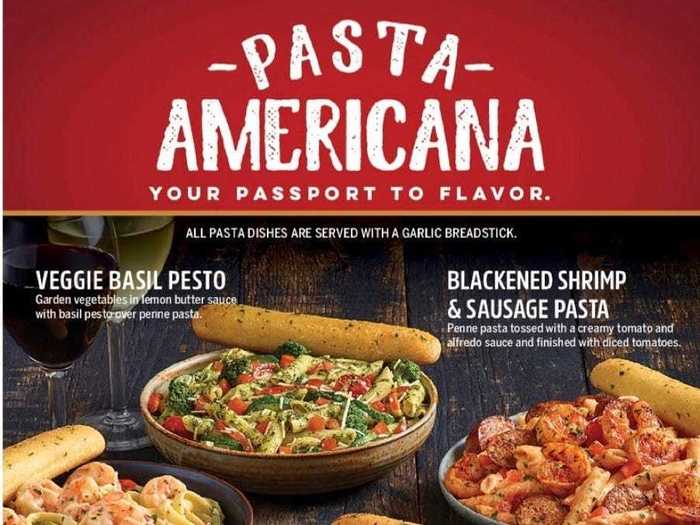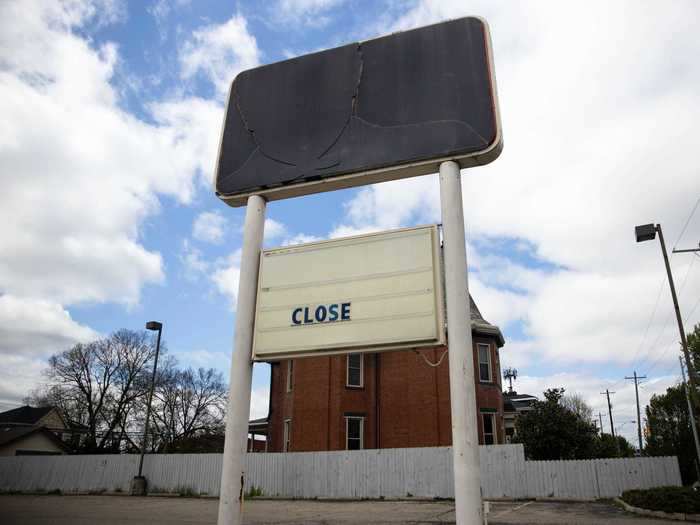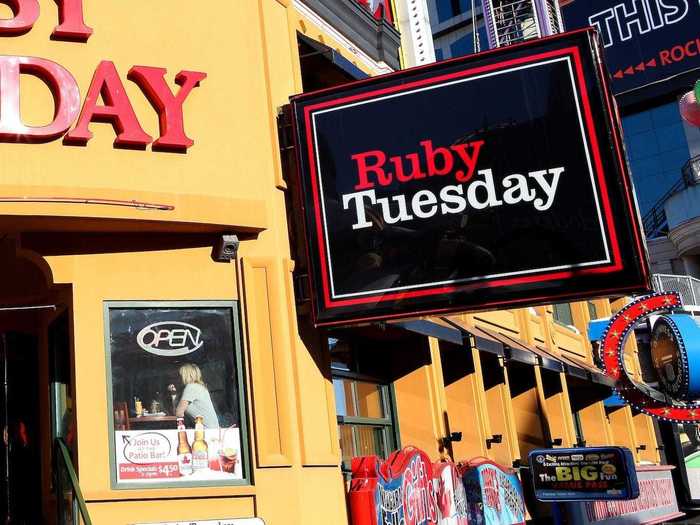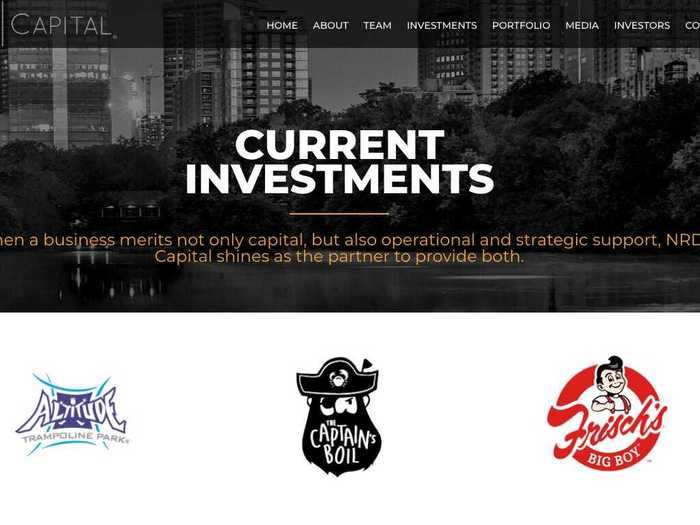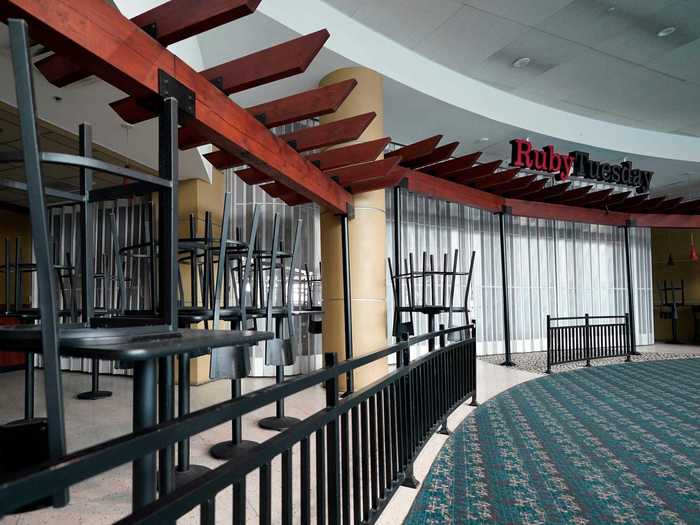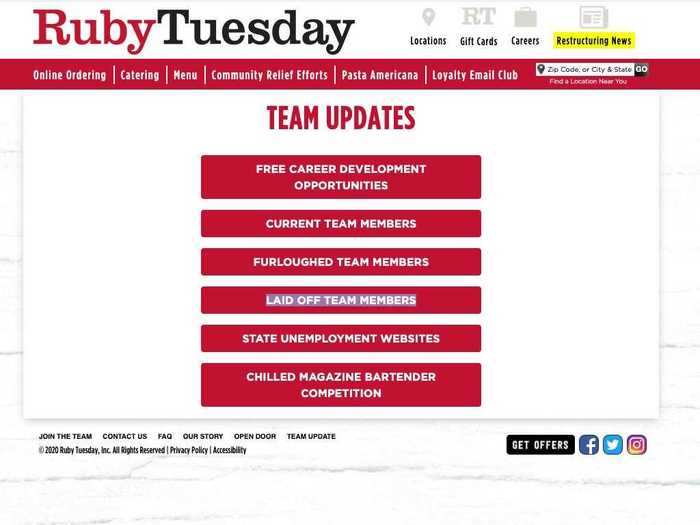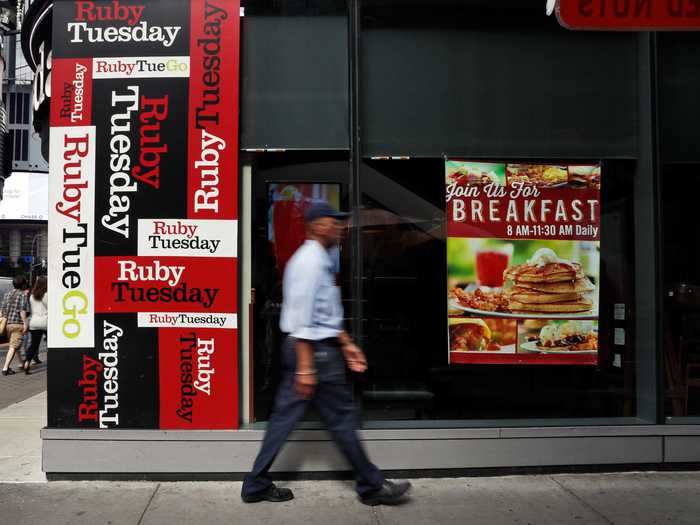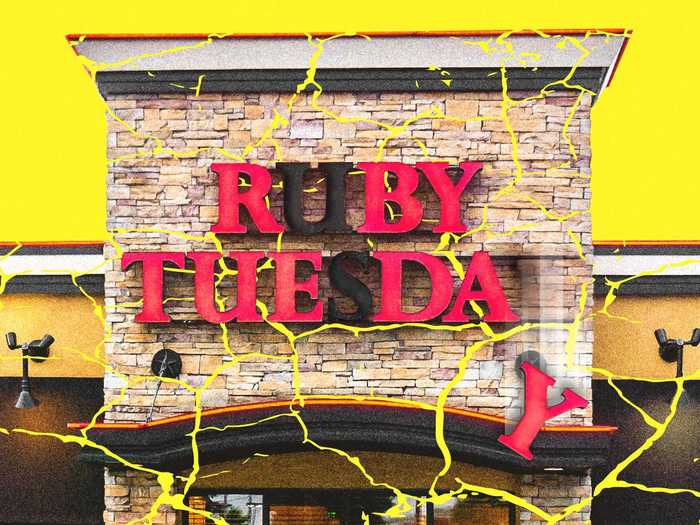Ruby Tuesday.AP Photo/Mary Altaffer, File
- Ruby Tuesday just became yet another restaurant filing for bankruptcy after the pandemic.
- The chain first opened in 1972 as a casual burger stop, and underwent a major redesign in the 2000s.
- In recent years Ruby Tuesday was acquired by a private equity firm and went through five CEOs.
Restaurant chain Ruby Tuesday filed for bankruptcy after closing one-third of its locations this year.
It filed for Chapter 11 bankruptcy on October 7 in the U.S. Bankruptcy Court for the District of Delaware after a troubled year was worsened by the coronavirus pandemic. Stay at home orders and capacity restrictions hit Ruby Tuesday and other casual chains hard, many of which were already struggling. At least nine other chains have also filed for bankruptcy this year, including California Pizza Kitchen and the US arm of Le Pain Quotidien.
CEO Shawn Lederman said that this is not the end of Ruby Tuesday, but instead "an opportunity to reposition the company for long-term stability."
Here's how the chain went from a single restaurant in Knoxville, Tennessee where it is today.
The first Ruby Tuesday was opened by 21 year old Sandy Beall in 1972, right next to the University of Tennessee in Knoxville, where he was a student.
University of Tennessee.
Photo by Joe Robbins/Getty Images
As a student, Beall managed three Pizza Hut franchises. When the owner had a heart attack, he sold the restaurants and gave Beall $10,000 in Pizza Hut stock, telling him to start his own business
A Pizza Hut location, which is owned by Yum Brands Inc, is pictured ahead of their company results in Pasadena, California, U.S., July 11, 2016.
Mario Anzuoni/Reuters
The first restaurant, now closed, was a "burger and beer joint" according to the New York Times.
A fraternity brother and investor suggested the name Ruby Tuesday, after the Rolling Stones song.
In this March 24, 2016 file photo, members of The Rolling Stones, from left, Mick Jagger, Charlie Watts, Keith Richards and Ron Wood pose for photos from their plane at Jose Marti international airport in Havana, Cuba.
Ramon Espinosa File via AP
Beall also visited New York City to get ideas and look at potential competition, including TGI Fridays.
TGI Fridays.
John Lamparski/SOPA Images/LightRocket via Getty Images
Over the first few years, Beall opened restaurants at a rate of one every nine months.
Raymond Boyd/Getty Images
In 1982, Beall sold the chain to Morrison Restaurants Inc, a cafeteria and food service chain, for $15 million, and remained in charge.
Ruby Tuesday.
AP Photo/Mary Altaffer, File
Ruby Tuesday had more than 300 units by 1996, when parent company Morrison Restaurants Inc. split into three separate entities, one of which was Ruby Tuesday Inc, still headed by Beall.
Ruby Tuesday.
Jeffrey Greenberg / Universal Images Group via Getty Images
In 2000, Ruby Tuesday Inc sold all of the other restaurant chains under the brand, leaving room to focus on building more Ruby Tuesdays.
Don Bartletti/Los Angeles Times via Getty Images
By the time it turned 30 in 2002, Ruby Tuesday was the seventh largest casual dining restaurant chain in the US. Despite spending little on advertising it was competing with big names like Red Lobster and Outback Steakhouse.
Rachel Askinasi/Insider
At that point, Ruby Tuesday specialized in large portions for inexpensive meals with a strategy of "We Feed America for Under $10." In 2001, the average lunch check was $9, and the average dinner bill was $12.
In 2007, just before the recession, Ruby Tuesday underwent a total redesign to a more upscale look, away from "roller skates on the wall and the bad food," Beall said. By 2009, the company had spent more than $100 million on the upgrades, including serving higher end food and offering a wider wine selection.
Ruby Tuesday menu.
Business Wire
Ruby Tuesday had the misfortune of attempting to upgrade into a more formal and expensive dining experience just as the recession hit stores across the board, and competitors fought to offer the best deals. In 2008, the chain closed more than 50 locations.
A close sign is seen in the parking lot of a closed business as Ohio implements phase one of reopening dentists, veterinarians and elective surgeries in Columbus, Ohio.
Megan Jelinger/Reuters
In 2012, Ruby Tuesday had 896 restaurants and 43,000 employees, with stock prices slowly rising, it looked like a potential comeback. That year, Beall stepped down.
Raymond Boyd/Getty Images
In 2017, Ruby Tuesday was acquired by private equity firm NRD for $2.40 per share, or about $335 million.
NRD Capital.
https://nrdcapital.com/portfolio.php
Then in 2020, Ruby Tuesday was not spared by COVID-19 and lockdowns.
David J. Phillip/AP Photo
In August, Business Insider reported that Ruby Tuesday had closed more than one-third of its restaurants, leaving a total 298 still open. Reporter Irene Jiang noted that the chain's prospects didn't look good even before the pandemic, going through five CEOs in five years.
Ruby Tuesday.
Ruby Tuesday.
Business Insider also reported that Ruby Tuesday suddenly stopped paying pensions in July to more than 100 retirees before declaring insolvency on September 2.
Ruby Tuesday.
AP Photo/Mary Altaffer
On October 7, the chain announced it had filed for bankruptcy. Ruby Tuesday says it will continue business as usual, though the filing said that more closures could be coming soon.
Ruby Tuesday.
Samantha Lee/Business Insider

